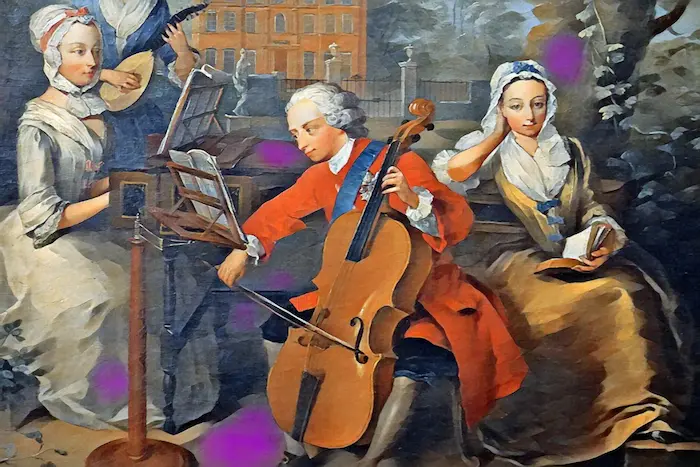The Classical period in music spans from roughly 1750 to 1820. It marks a time of significant change and development in Western music. This period is known for its clarity, balance, and form. Composers of this era aimed to create music that was elegant and structured. They focused on clarity of expression and the beauty of simplicity. This article explores the main characteristics of the Classical period, its major composers, and the impact on music that followed.
I. Key Traits
1. The Evolution of Musical Style
The Classical period followed the Baroque era. The Baroque era was known for its complex textures and intricate counterpoint. In contrast, the Classical period sought to simplify and clarify musical structures. Composers wanted music to be more accessible and pleasing to the ear. They achieved this by using clear melodies and straightforward harmonies.
Classical music often features balanced phrases and symmetrical structures. This is different from the more complex forms of the Baroque era. The music is generally organized into clear sections, such as the exposition, development, and recapitulation in sonata form.
2. Sonata Form
One of the most important forms developed during the Classical period is the sonata form. This form is used in the first movements of many symphonies, sonatas, and chamber works. The sonata form consists of three main sections:
Exposition: The first section introduces two contrasting themes. These themes are often in different keys.
Development: The second section explores and develops the themes introduced in the exposition. This section often includes key changes and thematic variation.
Recapitulation: The third section returns to the original themes. Both themes are now in the home key, providing a sense of resolution.
Sonata form helps create a clear structure within a composition. It allows composers to develop their ideas in a coherent and organized way.
3. Symphony and Orchestra
The symphony became a central genre during the Classical period. It typically consists of four movements, each with its own character and tempo. The typical structure of a Classical symphony includes:
Allegro: A fast and lively movement, often in sonata form.
Andante or Adagio: A slower, more lyrical movement.
Minuet and Trio: A dance-like movement, featuring a minuet followed by a contrasting trio section.
Allegro or Presto: A fast and energetic final movement.
The orchestra also grew in size and complexity during this time. It included strings, woodwinds, brass, and percussion. Composers used the expanded orchestra to create a wider range of colors and dynamics in their music.
4. Chamber Music
Chamber music was another important genre in the Classical period. Unlike symphonies, which are written for large orchestras, chamber music is composed for small ensembles. Typical chamber music groups include the string quartet, the piano trio, and the wind quintet.
The string quartet is perhaps the most significant chamber music ensemble from this era. It consists of two violins, a viola, and a cello. Composers like Haydn, Mozart, and Beethoven wrote numerous quartets, exploring different styles and forms.
5. Classical Forms and Genres
In addition to sonata form, the Classical period saw the development of several other musical forms and genres. Some of the most notable include:
Rondo Form: A form with a recurring theme, alternating with contrasting episodes. It is often used in the final movement of a sonata or symphony.
Theme and Variations: A form where a theme is presented and then varied in different ways. This form allows composers to explore different textures and moods.
Opera: Classical opera evolved from the Baroque era, with composers like Mozart and Gluck leading the way. The Classical opera often focused on clear, balanced musical lines and dramatic expression.
II. Major Composers of the Classical Period
Several composers stand out as major figures of the Classical period. Each of these composers made significant contributions to the development of Classical music.
Franz Joseph Haydn (1732-1809): Known as the “Father of the Symphony” and the “Father of the String Quartet,” Haydn’s music is characterized by its inventiveness and humor. He wrote over 100 symphonies and 68 string quartets, along with many other works.
Wolfgang Amadeus Mozart (1756-1791): A prodigious talent, Mozart composed over 600 works in his short life. His music is celebrated for its beauty, clarity, and emotional depth. Key works include his symphonies, operas, and piano concertos.
Ludwig van Beethoven (1770-1827): Beethoven’s music bridges the Classical and Romantic periods. His compositions are known for their complexity, emotional depth, and innovative use of form. His symphonies and piano sonatas are especially noteworthy.
III. The Influence on Future Music
The Classical period had a lasting impact on the development of Western music. The clarity and structure of Classical music influenced many later composers. The Classical forms and genres continued to be used and developed in the Romantic period and beyond.
The emphasis on melody and harmony in Classical music also paved the way for the Romantic era’s expressive and emotional style. Composers like Beethoven pushed the boundaries of Classical form, setting the stage for the innovations of the Romantic period.
See Also: Valuing Soviet Era Classical Music on Vinyl
IV. Conclusion
The Classical period was a time of great change and development in music. Composers of this era focused on clarity, balance, and form. They created music that was elegant and structured, using forms like the sonata and rondo. The symphony and chamber music became central genres, and key composers like Haydn, Mozart, and Beethoven made significant contributions.
The Classical period’s influence is still felt in music today. Its emphasis on clear structure and beautiful melodies continues to shape the way music is composed and performed. The legacy of the Classical period remains an important part of Western music history.

